Syn.: Aster laevis L.
Family: Asteraceae Bercht. et J. Presl
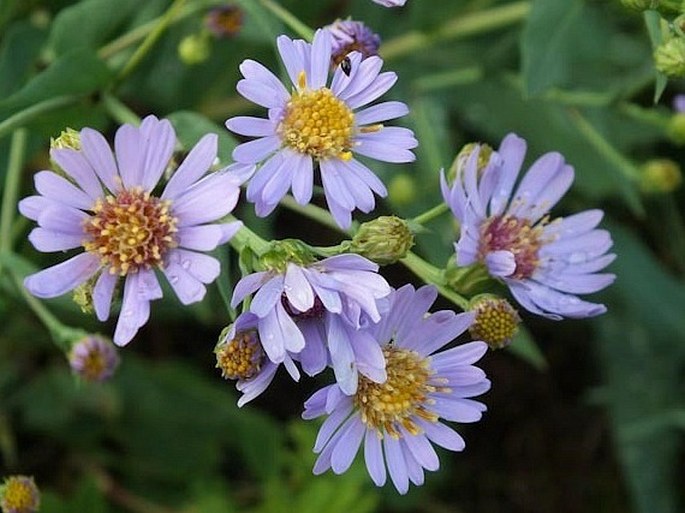
Distribution: North American species. Found from Atlantic to Pacific, from Canadian Yukon to northern California and western Florida, even into Mexican state of Coahuila. Populations in the whole area are divided into 4 varieties. Besides the nominate one, there is the western S. l. var. geyeri, Appalachian S. l. var. concinnum and southern US variety S. l. var. purpuratum. This species has been introduced to Canary Islands and to Europe (Great Britain, France and central Europe), to Turkey and to Caribbean. In Czechia the first escaped specimen was identified back in 1851. Both in America and Europe there is a number of hybrids of this species with other species of asters as Symphyotrichum lanceolatum and S. novi-belgii.
Ecology: Grows in prairies, meadows and grazing lands, along streams, deciduous forests and all sorts of disturbed localities. Blooms from July to September.

Description: Perennial herb, (15–)20–70(–120) cm tall, bluish sheen, rootstock short. Stem erect, smooth, sometimes hairy; leaves petiolate or almost sessile or clasping, lanceolate to linear, 30–200 × 10–25(–30) mm, margins smooth to toothed, pointed or rounded. Flower heads borne in a panicle; heads 2–3 cm across; bracts in 4–6 rows, diamond-shaped; disc florets numerous, yellow; ray florets 15–25, blue or purple, rarely white, (6–)7.2–11.3(–14.6) × 1.5–2.5 mm. Fruit is an achene with pappus of pale brown capillary bristles.
Note: The whole genus Symphiotrichum contains about 90 species, found in North and South America, but also in Eurasia. It was separated from genus Aster on basis of different morphology but also confirmed in their phylogeny. Taxonomy is very complicated. Some species can be differ in their heterophylly, like difference in shape of leaves in the spring and later in season. The same applies to shape of involucral bracts. Genetic diversity within a single species can be quite large.
Among „American asters“ we can name several other genera, like Canadanthus, Dieteria, Eurybia, Herrickia, Heterotheca, Machaeranthera, Oreostemma, Triniteurybia, Xanthisma.
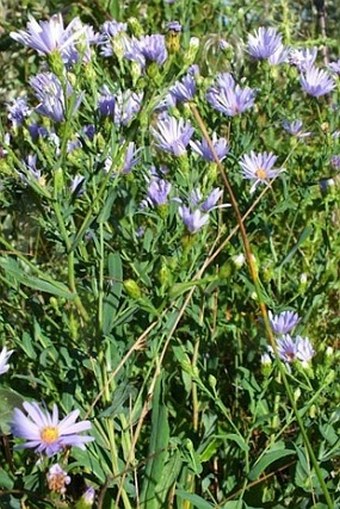
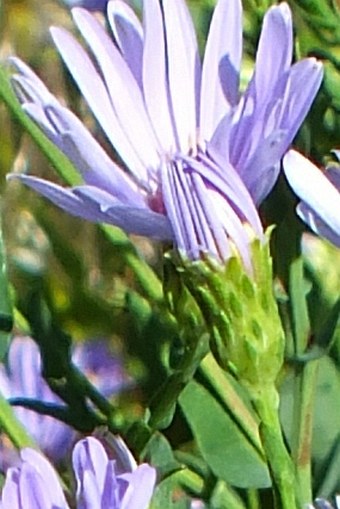
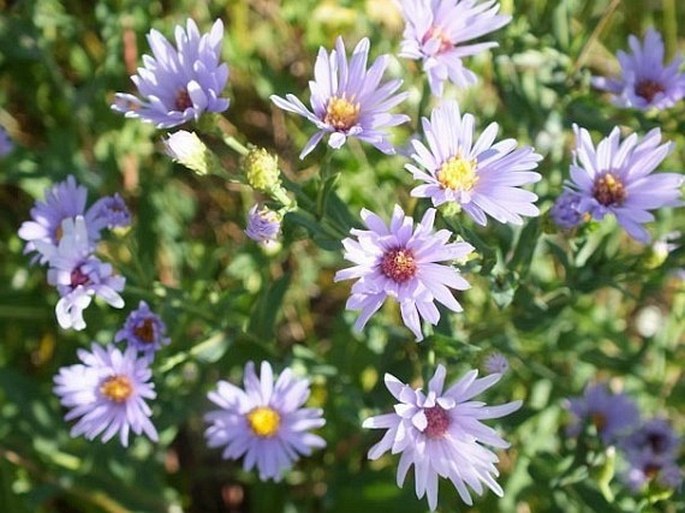
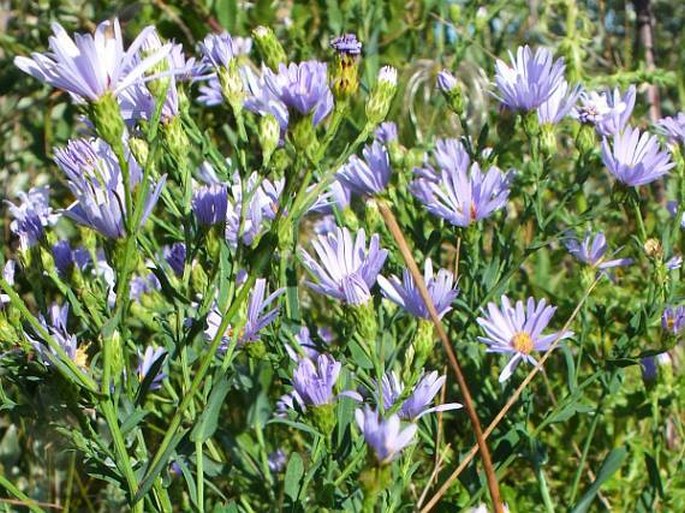
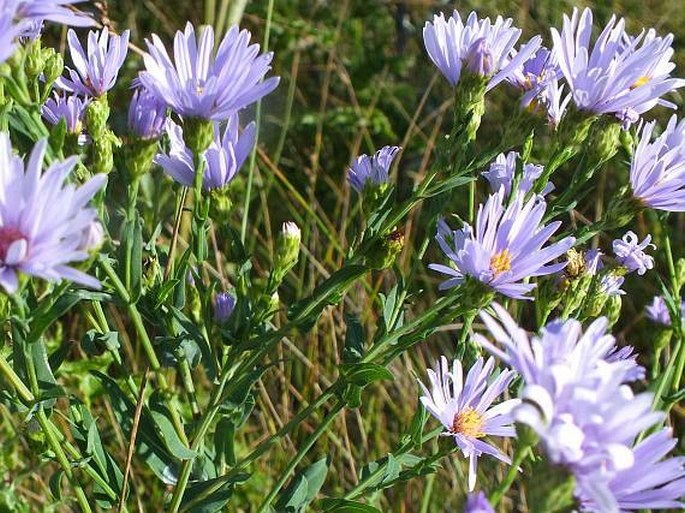
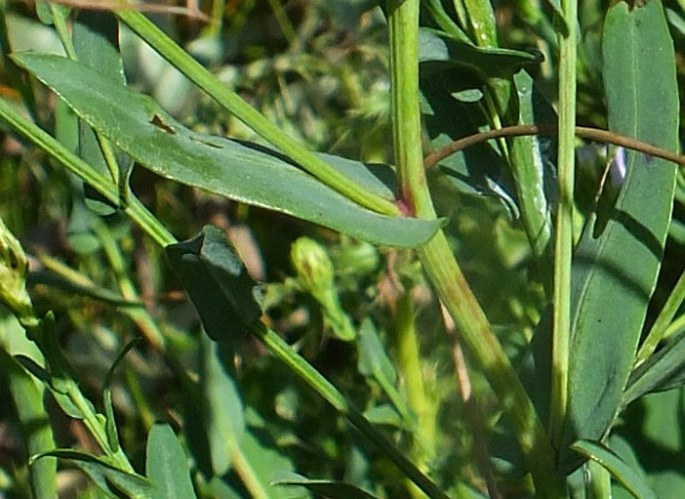
These images were taken in Canada, Alberta, Calgary, Confluence Park (August 18, 2013).


